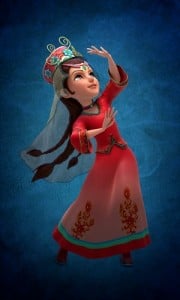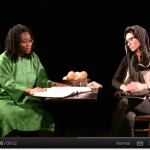I must admit, when I first saw my brother and sister walk in with these t-shirts on, my first thought was, “Awesome! Where can I get one of those?”

If you live in California, the graphic style should be all too familiar. Shepard Fairey’s stickers, stencils, and prints can be seen plastered on sidewalk newspaper stands, electrical boxes, billboards, and on the sides of trains all across Los Angeles and Orange County.
It’s all a part of an experiment in phenomenology—an idea that attempts to create conditions for the objective study of topics usually regarded as subjective. This is what Fairey claims as his artwork’s purpose.
Fairey started his sticker campaign with the aim that “frequent and novel encounters with the sticker provoke thought and possible frustration, nevertheless revitalizing the viewer’s perception and attention to detail.”
Since then, his sticker campaign has grown into the company known as OBEY Giant. The company manufactures and sells stickers, prints, collectable art, and clothes featuring Fairey’s artwork. With a company slogan, “Manufacturing Quality Dissent since 1989” and promises of “Worldwide propaganda delivery,” it is no mystery that most of the prints and graphics are of a political nature.
Fairey has become famous for creating collections with names and themes such as “Imperfect Union,” which features screen prints and paintings that are “comprised of artworks which [sic] scrutinize the dynamics of the imperfect union such as the unholy union of government and big business and the dichotomy of symbols and methods associated with ideologies of the American Dream.” His artwork ranges in subjects from revolutionary women, war, the duality of humanity, Darfur, and Obama—just to name a few.
So when confronted by images of Muslim women on his shirts, I was not surprised. After all, the images of Muslim women are relevant to current affairs and politically charged. Further exploration of Fairey’s art led me to these pictures (which are featured as prints and on t-shirts as well):

Since Fairey’s clothing line is mainly worn by skater boys and girls, my first thought was, “How many of them would look twice at this shirt before buying it and realize here is a hijabi woman on it? Do they even care about the image, or is this just a brand loyalty thing?”
Fairey’s idea is to put these images of propaganda and dissent in places where they can be registered by many people in order to challenge their perception and views. While the idea of putting them on t-shirts and stickers is genius and ensures that the images are given maximum exposure, I am not so sure that having a mainly skater consumer market will allow the images to be exposed to people who will recognize or be receptive enough to think twice about the image. Also, as with any consumer product, soon enough brand loyalty will take precedence over product content. With such powerful (whether positive or negative) images, I have to question whether clothes (something so easily subject to fads and aimed at a specific demographic) are an appropriate medium.

With other subjects, like the Zapatista National Liberation Army, Fairey shows men and women as foot soldiers. Conversely, almost all the prints having to do with the Israeli-Palestine conflict or the Iraq war feature only women.
These women are depicted as observers of conflict, as in the picture of the woman peering out from in between two curtains (pictured left). The Israeli side and the Palestinian side are distinguished by different color and patterned curtains. This Palestinian woman is an observer here.
At the same time, the other images suggest that these Muslim women are participants in conflict as well as observers. When I think of Muslim women being placed in conflict, I think of them as pawns, much like those in the game of chess, with the two players being the (male) opposing sides. They are used to symbolize culture, fuel savior campaigns from the “West” that justify invasions, and break down a country’s men.

The image of the niqabi woman with a gun peeking out from under her hijab is quite commanding (pictured right). Even with the words “PEACE” written across the bottom and a flower shooting from her gun, I am made uncomfortable by the use of a weapon—a symbol of violence—as something that a Muslim woman could hide under her “Islamic clothing.”
It evokes thoughts of having to remove your hijab or niqab while going through airport security or, at the least, having them patted down as other passengers look at you with even more suspicion than before. Nonetheless, the image, regardless of the partly concealed weapon, perhaps portrays women as tools of peace within these conflicts.
In the end, this is all speculation. I am not exactly sure what Fairey meant by these images. Perhaps his intention is just this: challenging perceptions and motivating discourse.
Although, I highly doubt that OBEY’s consumer market–mainly skaters–are sitting on street corners all across America discussing the visual representation of Muslim women within popular culture. What a beautiful dream!













